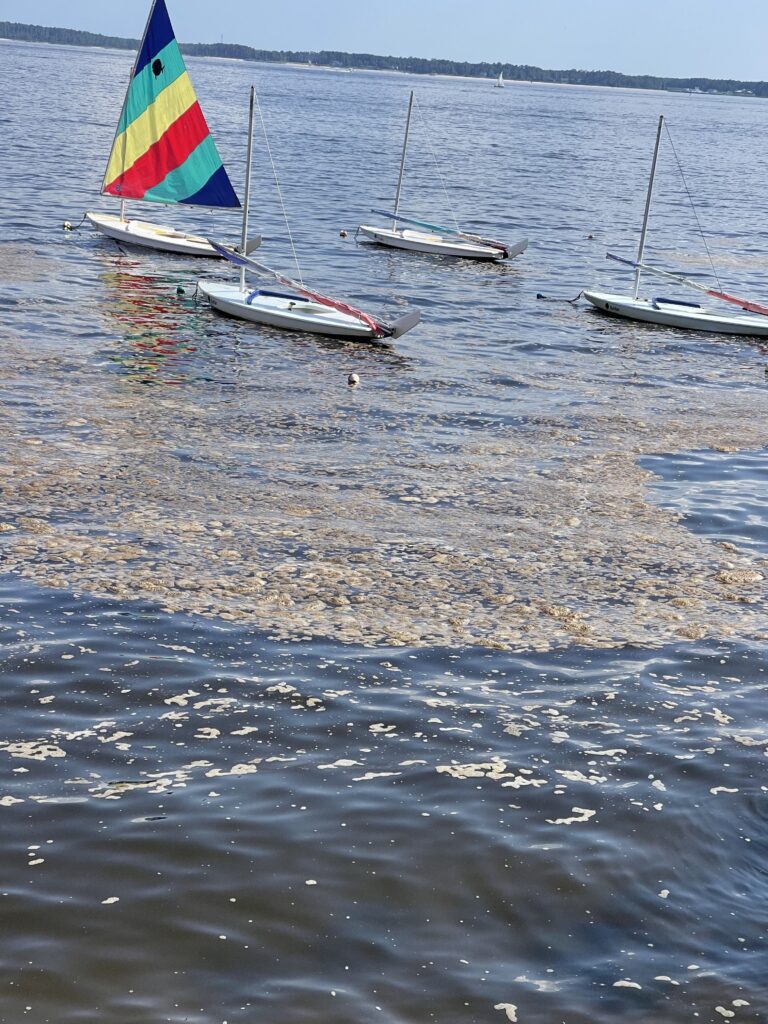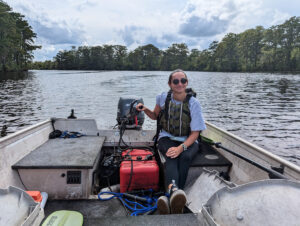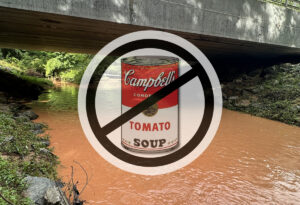News
Is it pollution? Or algae?
Algal Blooms, Environmental, Fish Kills, Neuse River Watershed, Sound Rivers, Tar-Pamlico Watershed, Water Quality
Posted on July 20th, 2023
Decaying algae can look a lot like sewage.
We’ve received a few calls lately from people on the lower Neuse reporting brown, foamy material floating on the surface of the water. Since it’s not pretty (brown and foamy) and can be pretty stinky, it’s easy to mistake decaying algae with sewage.
“Decaying algae is common in this part of the watershed during the warmer months,” said Neuse Riverkeeper Samantha Krop. “Sewage can look similar, but it is often grayer and tends to attract seabirds — and if it’s a direct discharge, like a boat dumping or a pipe overflowing, there’s really no mistaking it.”
We reached out to staff at the North Carolina Department of Environmental Quality’s Division of Water Resources about the cause of the “scum” and found out that the intense rain we’ve had after a dry period dumps a lot of stuff on land into the waterways, including fertilizer and other human-produced nutrient sources in addition to normal organic matter from the natural environment. All this put together, add some heat, and it can lead to a boom, then a breakdown, of algae.
The foam is whipped up by wind and surface waves, and it will take on the color of the organic material that’s breaking down, which is why it sometimes appears brown (and gross).
“While harmful algal blooms (PHABS) are currently on the Chowan, there are no reports of harmful algal blooms in the Neuse or Pamlico at this time,” said Sound Rivers Executive Director Heather Deck. “However, with heat and rain, that can change, and we would like folks to be vigilant and continue to send in reports of discolored water, smelly water, et cetera, so we can try and stay on top of conditions.”
Sam said tracking down the causes of these naturally unnatural events is part of the riverkeeping job.
“We always appreciate folks reporting concerns on the water,” Sam said. “We’re always willing to investigate those concerns and, like I said, really appreciate folks looking out.”
If you’ve got something to report about the waterways of the Neuse and Tar-Pamlico, don’t hesitate to reach out. Use our online form here, email us at info@soundrivers.org or give us a call at any of our offices.

Related News

Riverkeeper monitoring Tar-Pamlico Water Trail
July 25th 2024

Rain ramps up trash-trap cleanouts
July 25th 2024

Riverkeeper, intern take on emergency trash trap cleanout
July 25th 2024

Tar-Pam Riverkeeper investigates Cub Creek turbidity
July 25th 2024

Heavy rains lead to sky-high turbidity on Lick Creek
July 25th 2024

Riverkeeper: What goes up, must come down
July 18th 2024

Greenville’s trash trap gets emergency cleanout
July 18th 2024

Sound Rivers gets close up of cyanobacteria
July 18th 2024

